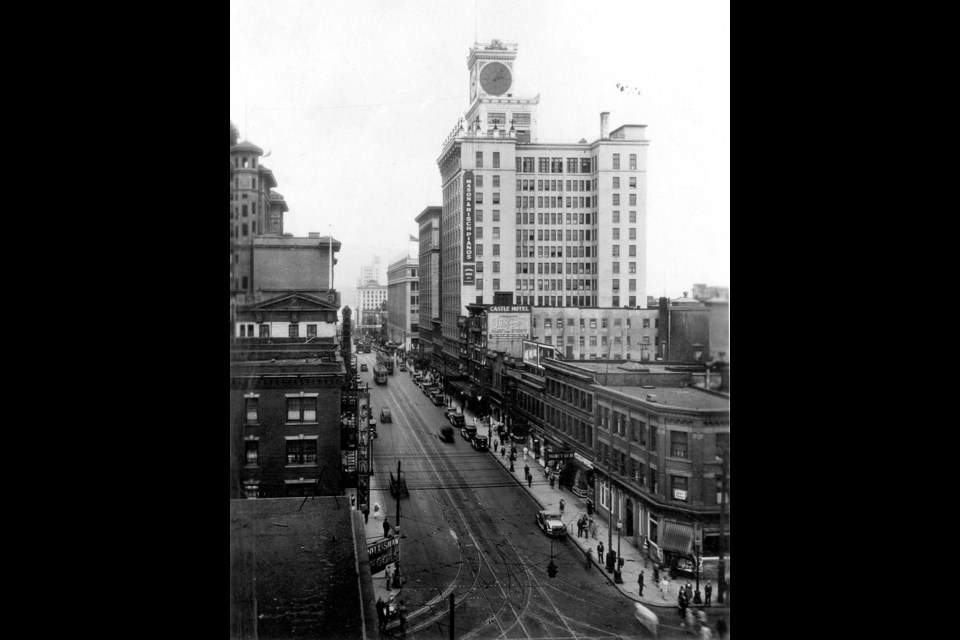The intersection of Robson and Granville is one of the city's central intersections, and has been for decades.
While it didn't start off as such (Gastown was the city's centre for the first few years), by the1920s, Granville and Robson streets had both becoming notable.
Granville Street, in particular, was important. It has played the role of the city's entertainment district for more than a century. Theatres of all sorts lined the street back in the 1920s, more than now.
Several streetcar lines ran down Granville as well. It had one of two bridges over False Creek (the Burrard Bridge didn't exist until the 1930s), so for people headed to the city's southern reaches, or western, Granville was a likely route.
Granville also terminated at CPR Pier D, where ships from Victoria and Nanaimo came in, meaning plenty of people from the region were in the area. Near Pier D were other piers where ships from B.C., the region, and the Pacific all docked; at the time, ships were the only way to cross the Pacific Ocean.
As such an important transit location, the CPR trains also stopped there.
Robson, meanwhile, was one of the major east-west routes in the city. Robson Square didn't exist, so the roadway crossed from Beatty all the way to Stanley Park.
Today the area is busy, but that's no surprise given Vancouver's size and role regionally and internationally. However, in the 1920s the city was still young (the CIty of Â鶹´«Ã½Ó³»was incorporated in 1886, though First Nations settlements have existed here for time immemorial).
In 1926 Â鶹´«Ã½Ó³»it turned 40 years old.
In 1921, the city had just 163,000 people, about the same as Nanaimo. However, it was a booming time in the city; by 1931 the population had passed 246,000.
The photos above capture some of that energy as the city grew. In the 1927 shot there are even bricklayers building a new structure.



